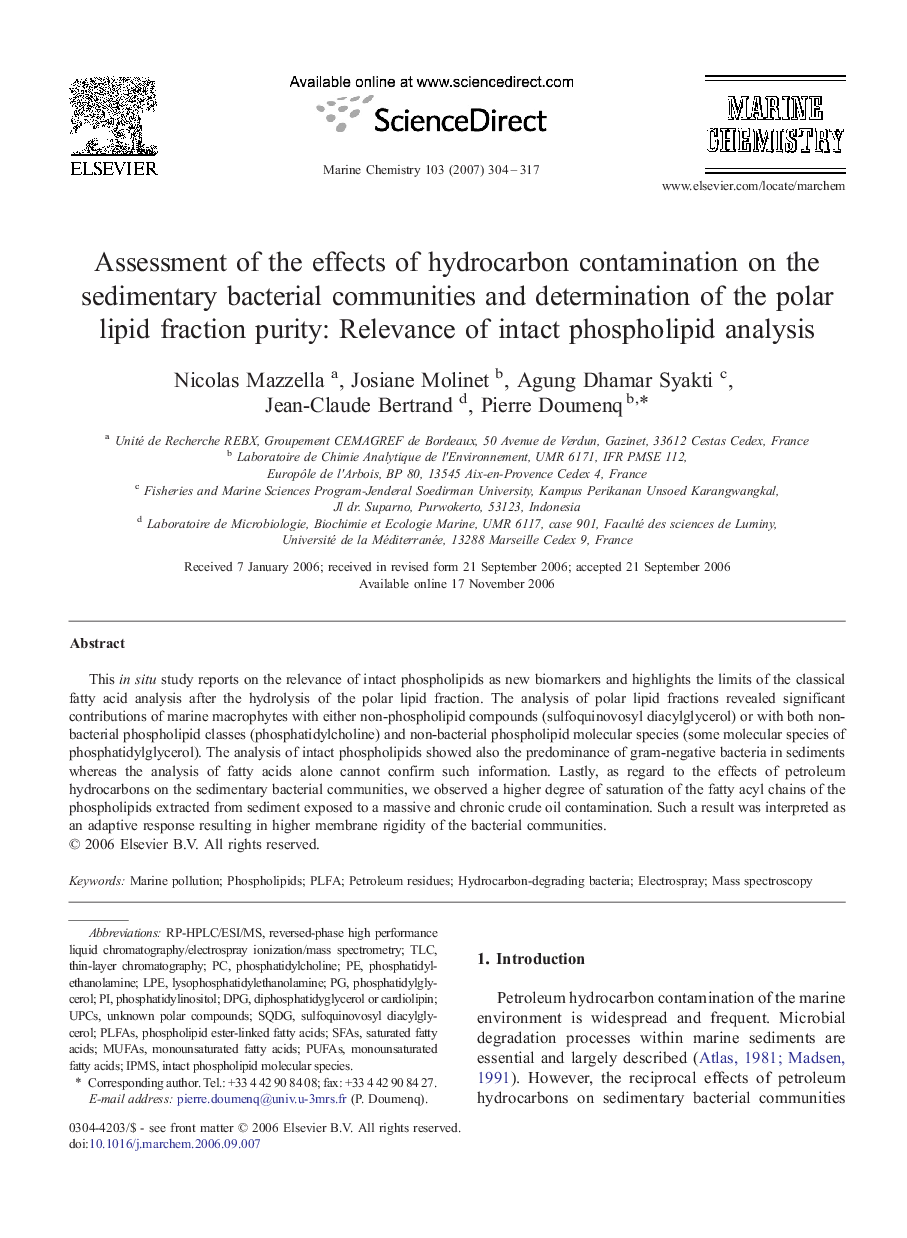| Article ID | Journal | Published Year | Pages | File Type |
|---|---|---|---|---|
| 1262060 | Marine Chemistry | 2007 | 14 Pages |
Abstract
This in situ study reports on the relevance of intact phospholipids as new biomarkers and highlights the limits of the classical fatty acid analysis after the hydrolysis of the polar lipid fraction. The analysis of polar lipid fractions revealed significant contributions of marine macrophytes with either non-phospholipid compounds (sulfoquinovosyl diacylglycerol) or with both non-bacterial phospholipid classes (phosphatidylcholine) and non-bacterial phospholipid molecular species (some molecular species of phosphatidylglycerol). The analysis of intact phospholipids showed also the predominance of gram-negative bacteria in sediments whereas the analysis of fatty acids alone cannot confirm such information. Lastly, as regard to the effects of petroleum hydrocarbons on the sedimentary bacterial communities, we observed a higher degree of saturation of the fatty acyl chains of the phospholipids extracted from sediment exposed to a massive and chronic crude oil contamination. Such a result was interpreted as an adaptive response resulting in higher membrane rigidity of the bacterial communities.
Keywords
Related Topics
Physical Sciences and Engineering
Chemistry
Chemistry (General)
Authors
Nicolas Mazzella, Josiane Molinet, Agung Dhamar Syakti, Jean-Claude Bertrand, Pierre Doumenq,
